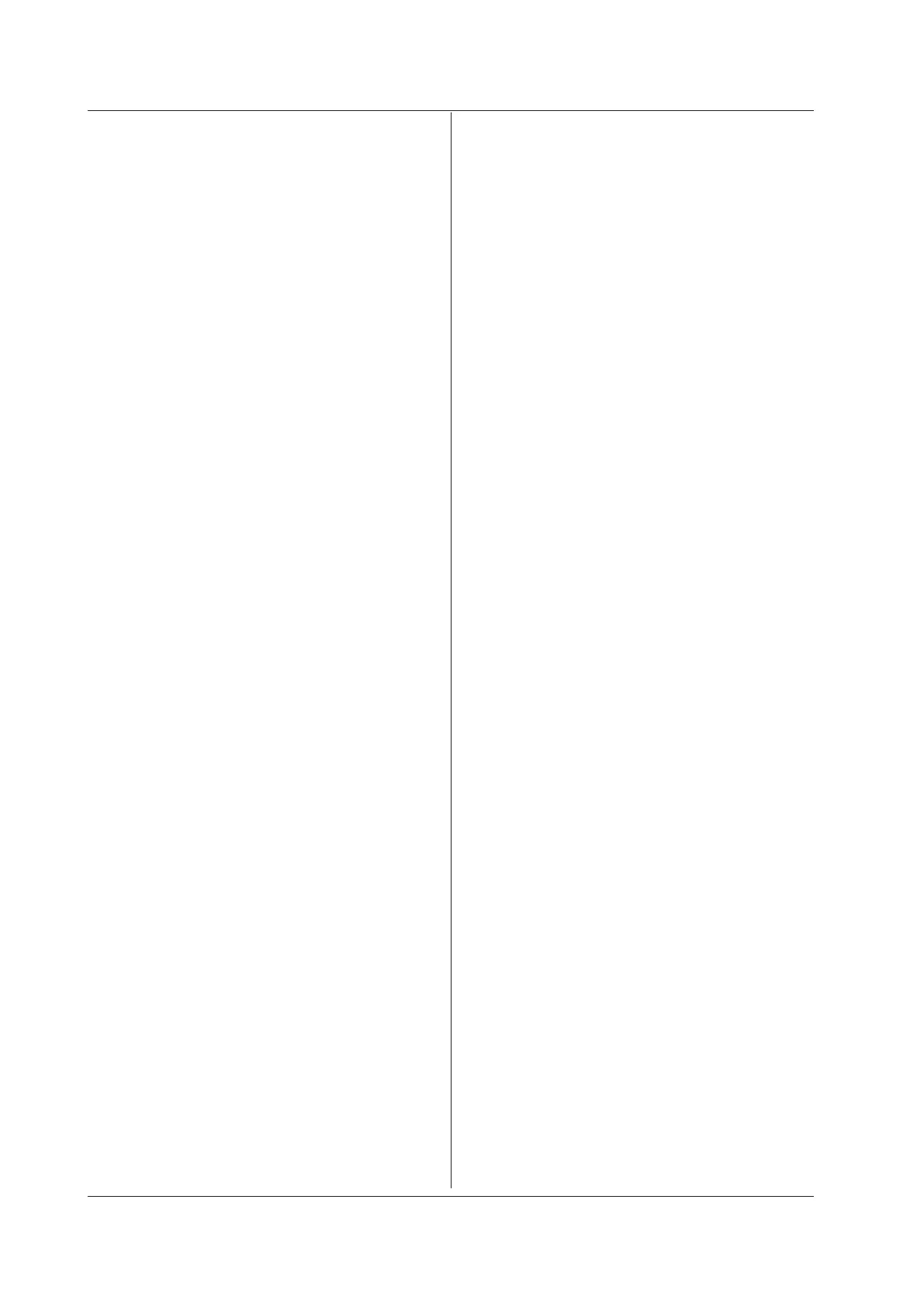4-132
IM DL350-17EN
:MEASure:{CHANnel<x1>[:SCHannel<x2>]
|MATH<x3>}:<Parameter>:VALue?
Function Queries the measured value of a waveform
parameter.
Syntax
:MEASure:{CHANnel<x1>[:SCHannel<x2>]|
MATH<x3>}:<Parameter>:VALue? {<NRf>}
<x1> = 1 to 4, 7
<x2> = 1 to 60 (sub channel)
<x3> = 1, 2
<NRf> = 1 to 30000
<Parameter> = {AMPLitude|AVERage|
AVGFreq|AVGPeriod|BWIDth1|BWIDth2|
DUTYcycle|FALL|FREQuency|HIGH|LOW|
MAXimum|MIDDle|MINimum|NOVershoot|
NWIDth|PERiod|PNUMber|POVershoot|
PTOPeak|PWIDth|RISE|RMS|
SDEViation|TY1Integ|TY2Integ}
Example
:MEASURE:CHANNEL1:PTOPEAK:VALUE?
-> :MEASURE:CHANNEL1:PTOPEAK:
VALUE 30.516667E+00
Description • For channels that have sub channels, use the
:MEASure:CHANnel:SCHannel:<Parameter>:V
ALue command.
• This command returns “NAN” if the value
cannot be measured.
Parameters cannot be measured if the
measurement has not been performed or
if the measurement was performed, but
computations were not performed because the
specified range exceeded 10 Mpoint.
• The <NRf> at the end is used to specify which
iteration of statistical processing to query the
parameter value from. This command returns
“NAN” if the specified value does not exist.
- For non-cyclic statistical processing:
<NRf> can be omitted. If you omit , the
most recent history parameter value will be
queried.
If <NRf> is included, the history parameter
value of the waveform <NRf> times before
the newest history waveform will be queried.
- After cyclic statistical processing has been
completed:
<NRf> can be omitted. If you omit , the
parameter value within the cycle that was
measured last will be queried.
If you include <NRf>, the parameter value
within the cycle that was measured <NRf>
times after the measurement shown on the
screen’s left edge will be queried.
- When you execute a normal measurement,
without cyclic statistical processing, even
if you include <NRf> in the command, you
cannot query the waveform parameters in
the acquisition memory.
:MEASure:{XY<x>}?
Function Queries all the settings for automated
measurement of X-Y waveform parameters.
Syntax
:MEASure:{XY<x>}?
:MEASure:{XY<x>}:<Parameter>?
Function Queries the setting of a X-Y waveform parameter
(measurement item).
Syntax
:MEASure:{XY<x>}:<Parameter>?
<x> = 1, 2
<Parameter> = {XY1Integ|XY2Integ}
:MEASure:{XY<x>}:<Parameter>:COUNt?
Function Queries the count of measured values for
cyclic statistical processing of a X-Y waveform
parameter.
Syntax
:MEASure:{XY<x>}:<Parameter>:COUNt?
<x> = 1, 2
<Parameter> = {XY1Integ|XY2Integ}
Example
:MEASURE:XY1:XY1INTEG:COUNT?
-> :MEASURE:XY1:XY1INTEG:COUNT 1
:MEASure:{XY<x>}:<Parameter>:{MAXimu
m|MEAN|MINimum|SDEViation}?
Function Queries a cyclic statistical processing value of a
X-Y waveform parameter.
Syntax
:MEASure:{XY<x>}:<Parameter>:
{MAXimum|MEAN|MINimum|SDEViation}?
<x> = 1, 2
<Parameter> = {XY1Integ|XY2Integ}
Example
:MEASURE:XY1:XY1INTEG:MAXIMUM?
-> :MEASURE:XY1:XY1INTEG:MAXIMUM NAN
Description This command returns “NAN” for any statistics
that cannot be processed.
:MEASure:{XY<x>}:<Parameter>:STATe
Function Sets or queries whether the specified X-Y
waveform’s waveform parameter (measurement
item) is ON or OFF.
Syntax
:MEASure:{XY<x>}:<Parameter>:
STATe {<Boolean>}
:MEASure:{XY<x>}:<Parameter>:STATe?
<x> = 1, 2
<Parameter> = {XY1Integ|XY2Integ}
Example
:MEASURE:XY1:XY1INTEG:STATE ON
:MEASURE:XY1:XY1INTEG:STATE?
-> :MEASURE:XY1:XY1INTEG:STATE 1
4.22 MEASure Group
